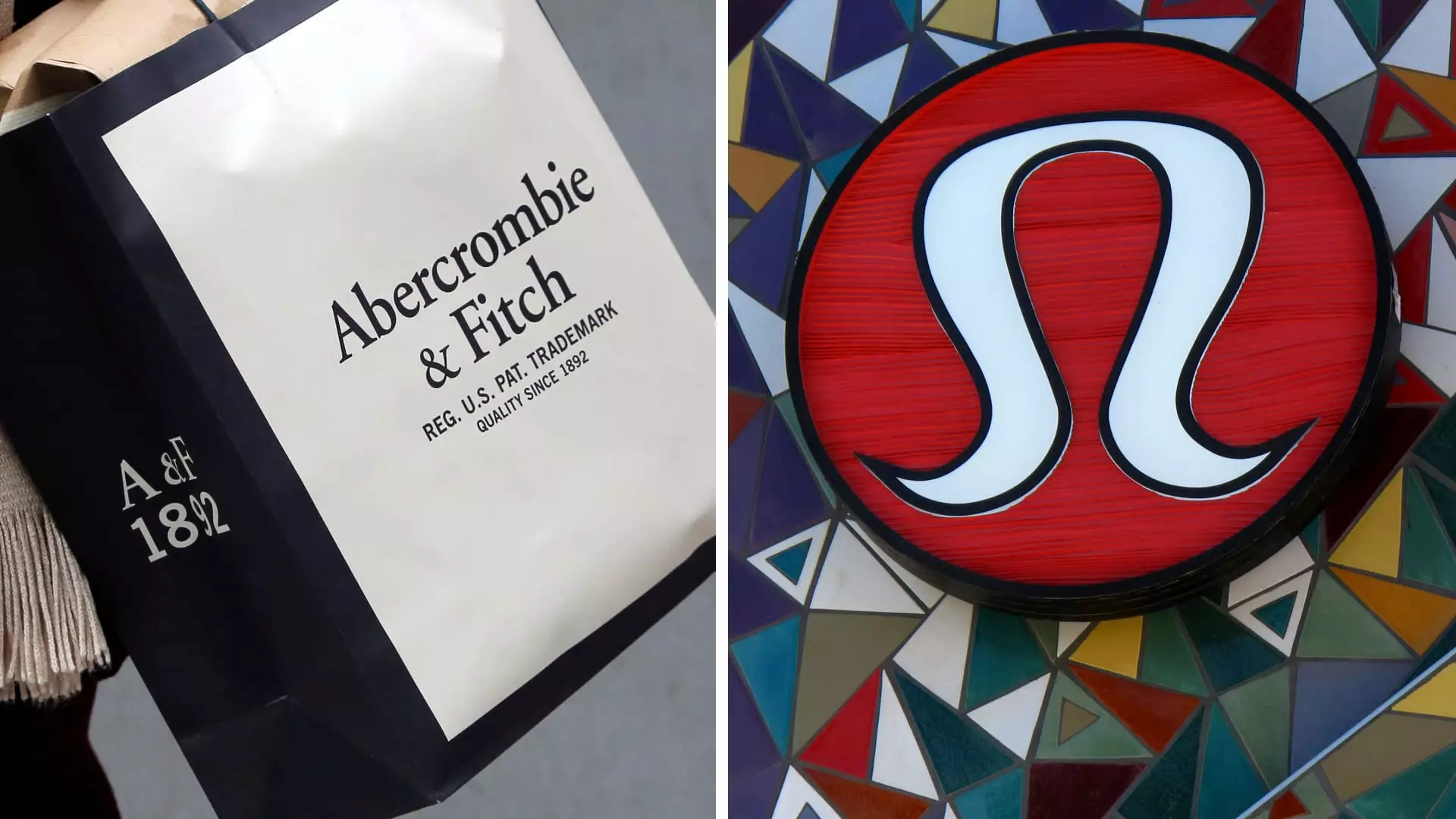The early reports from major retailers have painted a complex picture of this year’s holiday shopping season. Although some companies like Lululemon and Abercrombie & Fitch showcased stronger than anticipated results, their shares plummeted, demonstrating a disconnect between better-than-expected sales figures and investor sentiment. As retailers release their sales data, it becomes imperative to analyze not just the numbers, but also the broader implications of these trends in the context of current economic conditions and investor expectations.
Lululemon, renowned for its premium athleisure offerings, adjusted its revenue forecast upward, projecting sales growth between 11% to 12%, translating to a total revenue of $3.56 billion to $3.58 billion for the fourth quarter. This growth exceeds earlier predictions, highlighting the brand’s effective strategy in appealing to fitness-minded consumers. Lululemon’s profitability forecast also improved, with expectations for earnings per share ranging from $5.81 to $5.85. Such positive adjustments indicate a robust consumer response during the critical holiday period. Financial Chief Meghan Frank noted that the favorable sales response played a crucial role in this revised guidance.
Meanwhile, Abercrombie & Fitch also displayed a modest increase in sales projections, nudging its net growth outlook for the holiday period to the range of 7% to 8%. However, the brand’s clarity regarding a shift in focus toward long-term profitability has raised questions. CEO Fran Horowitz emphasized the importance of sustainable, profitable growth, thereby highlighting a strategic pivot from rapid sales growth to maximizing profit margins. This evolution in focus indicates that while the brand is still experiencing growth, the pace may not match prior explosive rates—an aspect investors are watching intently.
Contrastingly, Macy’s reported underwhelming results which fell below its expected range of $7.8 billion to $8 billion, resulting in a decline of over 6% in its share price. The department store’s struggles underscore the challenges faced by traditional retail amid changing consumer behaviors, especially as shoppers increasingly turn to e-commerce options. Macy’s situation is symptomatic of broader trends affecting brick-and-mortar retailers as they navigate a recovering yet volatile market.
American Eagle Outfitters also raised its fourth-quarter outlook but reported an anticipated decline in total revenue due to structural issues in its fiscal calendar. While the company expects operating profits to rise, the overall decline in sales signals further complications, likely attributable to shifts in consumer spending habits or competition from rapidly growing online platforms.
As retailers compile their results amid inflationary pressures and changing consumer spending habits, it’s critical to contextualize these findings within the overall economic landscape. The National Retail Federation predicts that growth during the holiday shopping season will be considerably muted compared to the explosive figures recorded in previous years, especially post-pandemic. Recent data from Mastercard SpendingPulse trended positive with a 3.8% year-on-year increase in retail sales, but concerns linger about real growth when adjusted for inflation, which could diminish purchasing power.
Furthermore, the ICR conference—an event that gathers prominent figures in the retail industry—serves as a bellwether for investor expectations and market dynamics. Discussions and presentations at the conference will likely inform traders’ outlooks on consumer sentiment and retailer performance in the near future.
The mixed results from U.S. retailers indicate that while some brands remain resilient and adaptive, others struggle to find their footing. It raises pivotal questions about the sustainability of growth in a landscape where the average consumer is being increasingly selective with discretionary spending. Brands like Lululemon and Abercrombie & Fitch are showing tactical agility, but it remains to be seen if they can maintain momentum as they navigate the complexities of a transitioning retail environment.
Investors may need to recalibrate their expectations, recognizing that while holiday sales can still surprise positively, fundamental changes in consumer behavior and economic conditions necessitate a more cautious approach to assessing retailer health moving forward. As retail continues to evolve, the ability to adapt to shifting trends and prioritize profitability over rapid revenue growth will likely define the success stories in the coming years.

